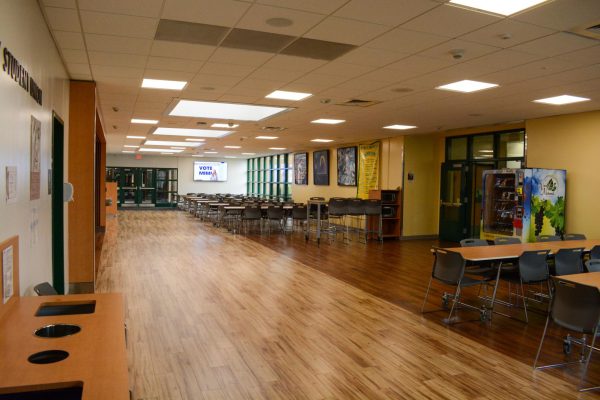Opinion: Perspectives on Jesuit’s dress code: changes and goals for the future
Students roam campus in a variety of attire including sweatpants.
While Jesuit has relaxed its dress code in recent years by allowing sweatpants and leggings, steps to reduce gender bias are still needed.
After making changes to the dress code last school year to accommodate COVID restrictions, Jesuit allowed students to wear leggings and sweatpants into this school year.
“Allowing sweatpants and leggings was a very welcome change as I don’t feel they are inappropriate and they allow students to be comfortable. I haven’t noticed students being overly comfortable, which is one of the fears of a casual style of dress code being reflected in students’ behaviors,” English teacher Megan Mathes said.
In further attempts to relax the dress code, students are now permitted to wear shorts and skirts with a length of 3 inches above the knee, opposed to the prior knee length requirement. Students, however, don’t seem as enthusiastic about this change.
“The new short and skirt length has not enabled me to wear more of my clothing. 3 inches is not really much. Nothing I own is at that length. It’s either at the knee, below, or much shorter,” senior Medini Madhusudan said.
In recent years, rules such as pant length sparked questions on how the dress code is applied across genders, a concern growing among students, parents, and the larger community.
Adjustments in the language of Jesuit’s dress code attempt to make it less focused on gender and capable of being applied equally across all genders.
“We’ve removed language suggesting our dress code is in place to restrict female sexuality or prevent male distractedness. We also removed the word ‘modest’ from our dress code, which may suggest some students were deliberately dressing immodestly. Our dress code is more about teaching students to dress appropriately for school (just as they should dress appropriately for sports, or drama, or formal events), and not about sexuality,” Principal Paul Hogan said.
While these changes seem to be moving in the right direction, Jesuit still has a ways to go in closing the gender bias gap present in all dress codes.
In Amber Thomas’ article addressing the negative messages dress codes send to students, she notes that while many dress codes have eliminated gender-binding language, certain rules, such as banning halter tops, apply more to female students.
Expanding on her argument, Thomas argues that “rules that prohibit specific items due to their perceived sexiness (e.g., “short shorts”, “sheer clothing” etc.) impact students wearing clothing marketed to girls more than their peers.”
As popular female fashion is more revealing than men’s clothing, rules that restrict the amount of skin shown tend to unfairly limit women in their choice of clothing.
Students have caught onto this common theme with many female students struggling to find clothing that makes them feel confident in following fashion trends while still adhering to the dress code.
“The rules seem to favor the men at our school. Men’s fashion conforms much more to our school’s dress code, while women’s fashion doesn’t. We had a discussion in student government that women’s clothing in stores is cropped and does show shoulders, so it’s hard for women at our school to find clothes that fit the dress code,” senior James Miller said.
Another way dress codes tend to target women is through requiring specific parts of the body to be covered.
“I would like to see the school reconsider rules that students, particularly girls, have to cover certain parts of their body. Bodies are all shaped differently and shirts that cover one girl, won’t necessarily cover another body type. I don’t like dress code rules that have so much emphasis on bodies. It seems to emphasize girls’ bodies, and we’re already conscious enough of our bodies that we don’t need to have attention drawn to it,” Mathes said.
In order to remedy the unavoidable gender bias resulting from dress codes, Jesuit should seek more student-input, as well as consult popular fashion. By prohibiting clothing that is popular in the market, particularly for women, dress codes cannot help but employ gender bias.
Therefore, Jesuit needs to adapt better with the times, similar to public schools in our area. This means having a very limited dress code, similar to that of Portland Public Schools (PPS). PPS essentially requires students to wear clothes that they are comfortable in as long as it doesn’t threaten the safety of other students. For example, students cannot wear clothing with hate speech that targets any protected groups.
Allowing students the freedom to dress to their own comfort prepares them better for their learning environment where they will not feel judged for their appearance.
By taking away restrictions, students are able to individually identify what makes them comfortable.
Dress codes perpetuate the targeting and sexualization of female bodies and make students feel that their bodies are for the gazes of others’.
“When people judge what I’m wearing in order to dress code me, it makes me feel like my body is not for myself anymore, and like someone is taking it from me,” Madhusudan said.









